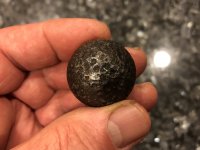Wildcat1750
Gold Member
- Nov 18, 2012
- 5,015
- 4,105
- 🏆 Honorable Mentions:
- 4
- Detector(s) used
-
AT PRO/Ace 250w8.5x11" DD Coil/
Garrett Pro-Pointer/Garrett Pro-Pointer AT/
Vibra-Tector 730/
Radio Shack Discovery 1000 (Tracker IV)
- Primary Interest:
- All Treasure Hunting
I have dug 4 of these iron balls, widely separated, on a wooded hillside
3 on one hunt and another on a different hunt.
Each measures approximately 1" diameter.
Each weighs 3.4 ounces.
The surface is somewhat knobby.
At first I thought ball bearings... but some have suggested canister shot.
Please help with identification if you can!
Thanks for Looking...
Nick
3 on one hunt and another on a different hunt.
Each measures approximately 1" diameter.
Each weighs 3.4 ounces.
The surface is somewhat knobby.
At first I thought ball bearings... but some have suggested canister shot.

Please help with identification if you can!
Thanks for Looking...
Nick


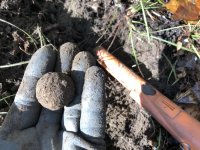
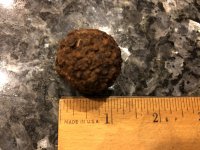
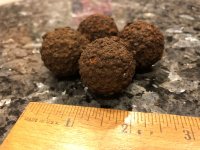
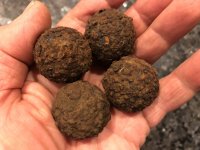


 Here is a great reply from
Here is a great reply from 

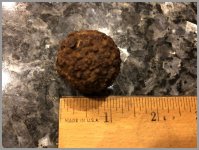
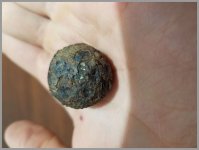

 Lastly I recovered a Revolutionary War era civilian sling buckle less than 100 feet from these finds on this property. None of this information will prove helpful but it's fun to speculate!
Lastly I recovered a Revolutionary War era civilian sling buckle less than 100 feet from these finds on this property. None of this information will prove helpful but it's fun to speculate! 